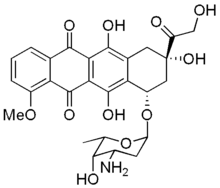INTRODUCTION: Erdheim-Chester disease is a rare histiocytosis, which must be considered in patients with diffuse xanthogranulomatous infiltrations. The diagnosis of ECD requires a vigilant physician to interpret both the histological appearance and multi-organ involvement seen in this disease.
CASE PRESENTATION: A 64-year-old Greek male with multiple admissions for pleural effusions presented complaining of progressive swelling of both eyes and intermittent double vision for four months. Eighteen months prior he was hospitalized for an exudative left pleural effusion, with negative work-up for infections and malignancies. Two months later, he had recurrence of this effusion and under went Video-Assisted Thoracic Surgery (VATS), which revealed generalized thickening of the visceral and parietal pleura. Biopsy displayed dense fibrous tissue with scattered lymphohistiocytes and no malignant cells. Despite talc pleurodesis, the left effusion returned, mad repeated biopsy showed fibrous tissue with histiocytes and fibroblast proliferation. He returned months later with severe dyspnea and CT-chest showing pericardial and right pleural effusions. VATS illustrated thickening of both the right pleura and pericardium, with fragments of fibroadipose tissue and aggregates of histiocytes. No medical treatment was initiated during these hospitalizations.On this admission, physical examination revealed swelling and proptosis in both eyes. Visual acuity was 20/25 in right and 20/20 in left. The eyes were midline, with restricted motility in all directions. The heart sounds were distant and breath sounds were decreased in bilateral bases. Labs were normal. Magnetic resonance of the orbit demonstrated bilateral diffuse infiltrates. A biopsy revealed many lipid-laden histiocytes that were immunopositive for CD68 and negative for CD1a and S100. Thus, the diagnosis of Erdheim-Chester disease was made. The patient was started on prednisolone 40mg/day and a 2-month follow-up showed improved proptosis and stabilization of pleural effusions.
DISCUSSIONS: Erdheim-Chester disease (ECD) is a rare, non-Langerhans cell histiocytosis characterized by diffuse infiltration of affected organs with lipid-laden histiocytes and Touton-type giant cells, histochemically distinct from Langerhans' cell histiocytosis. The most common presentation is bone pain, followed by diabetes insipidus, exophthalmos, retroperitoneal masses, and pulmonary or cardiac involvement. Radiologically, the most specific finding is bilateral and symmetrical cortical osteosclerosis affecting mainly the diaphyseal and metaphyseal regions of long bones with sparing of the epiphyses. Characteristic histopathology includes a dense infiltrate of foamy histiocytes accompanied by lymphocytes, monocytes, Touton-giant cells and variable amounts of fibrosis. These non-Langerhans cells are immunopositive for CD68 and factor XIIIa, and negative for CD1a and other dendritic cell markers. There is variable response to S100 and Birbeck granules are not detected under electron microscopy. ECD may involve the pituitary causing diabetes insipidus, and other endocrine abnormalities. It may cause interstitial lung disease with a restrictive pattern. Frequently, the thoracic CT shows reticular and centrilobular nodular opacities, scattered ground glass shadowing, and interlobular septal and pleural thickening. It can involve the pericardium, resulting in symptomatic pericardial effusion. Fibrosis of retorperitoneal fat can lead to hydronephrosis and renal failure. The dense fibroxanthagranulomatous can extend into the retro-orbital area with resulting exophthalmos and visual defects. Demyelination in the cerebellum and pons leads to ataxia, while lesion in the dura can cause seizures. Treatment has been attempted with steroids, cyclophosphamide, vinblastine, vincristine, adriamycin, colchicines and radiotherapy in varying combination, with minimal clinical response. Steroid therapy has been reported to improve exophthalmos, renal and bone involvement. Radiotherapy transiently relieves bone pain, but not exophthalmos. Improvement in pulmonary symptoms has been documented with steroids alone or in combination with cyclophosphamide.
CONCLUSION: The prognosis is usually poor, most patients die of congestive heart failure, lung fibrosis or renal insufficiency. This may be due to delayed diagnosis, which requires an alert physician to interpret the histological appearance and unique pattern of multiorgan involvement seen in ECD.
DISCLOSURE: Raymond Khan, None.
Raymond Khan DO * Vasilios Sierros MD Thu Yein MD New York Hospital Queens/Weil Medical College Cornell, Flushing, NY
COPYRIGHT 2005 American College of Chest Physicians
COPYRIGHT 2005 Gale Group



